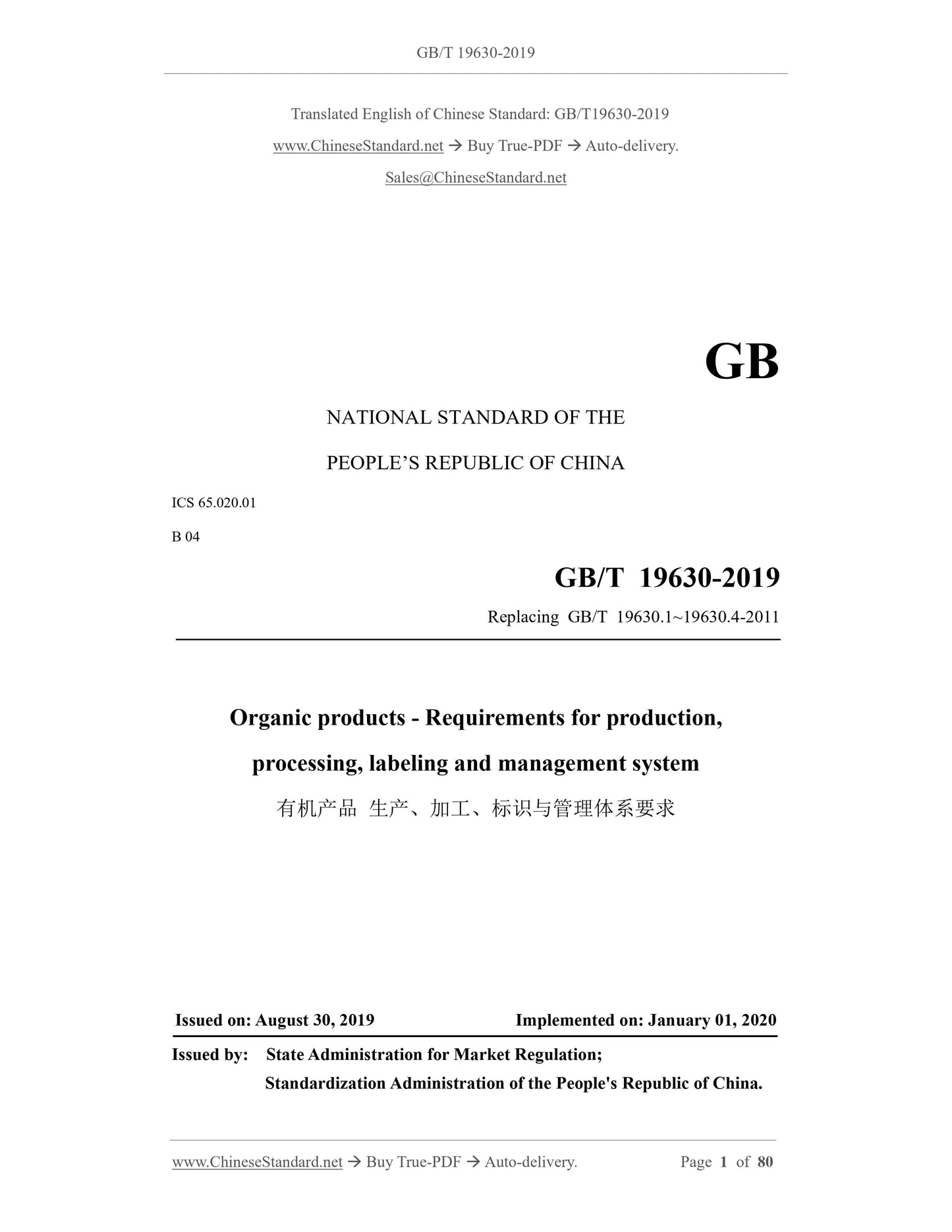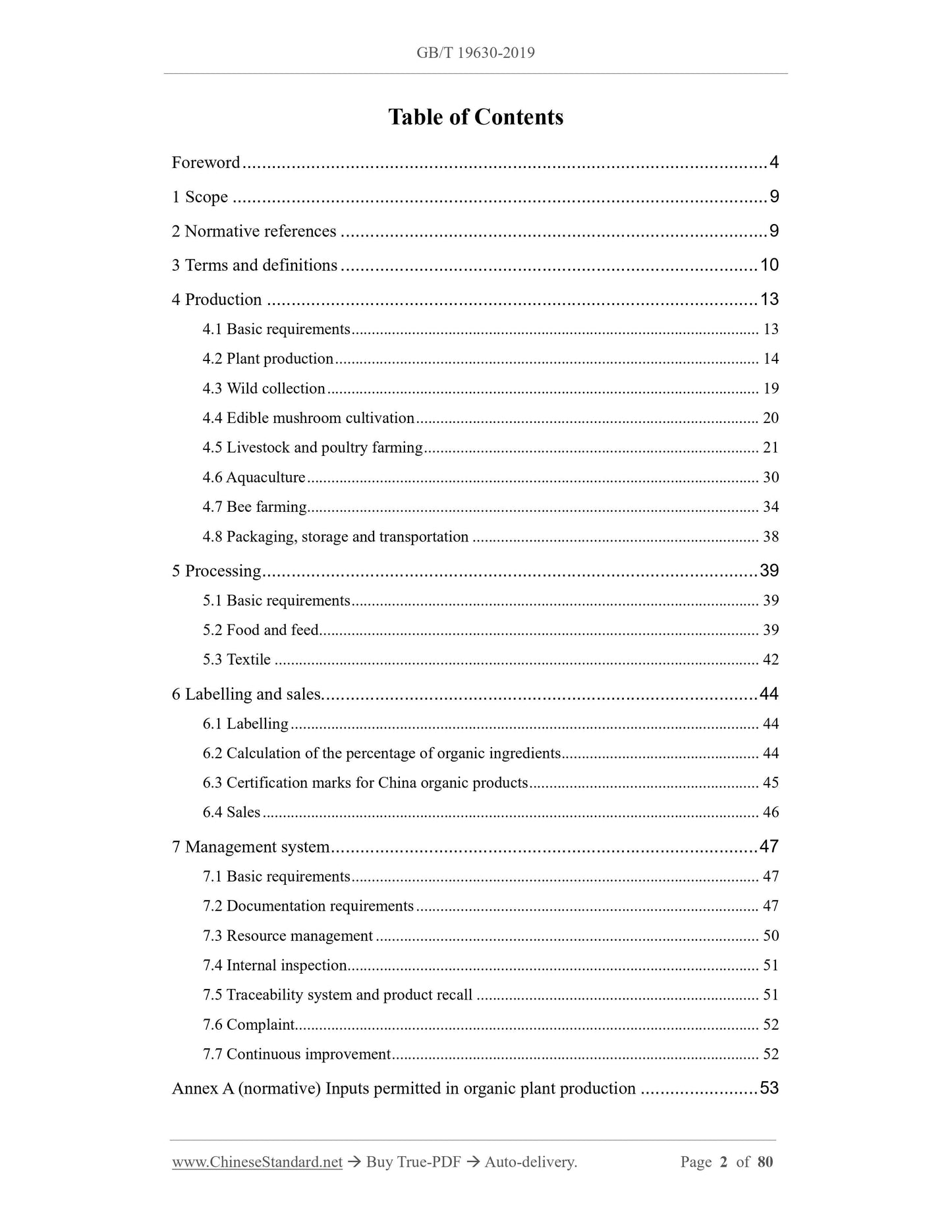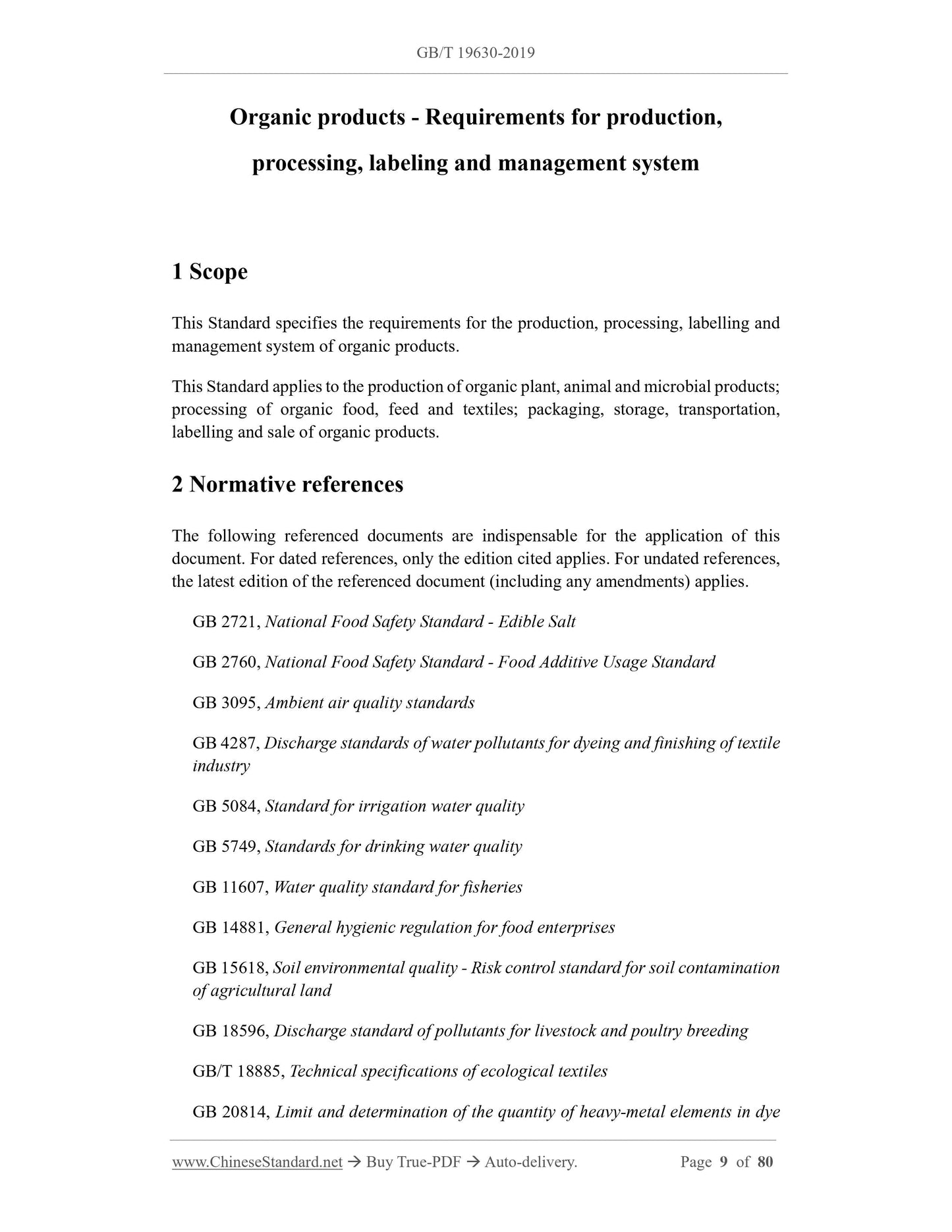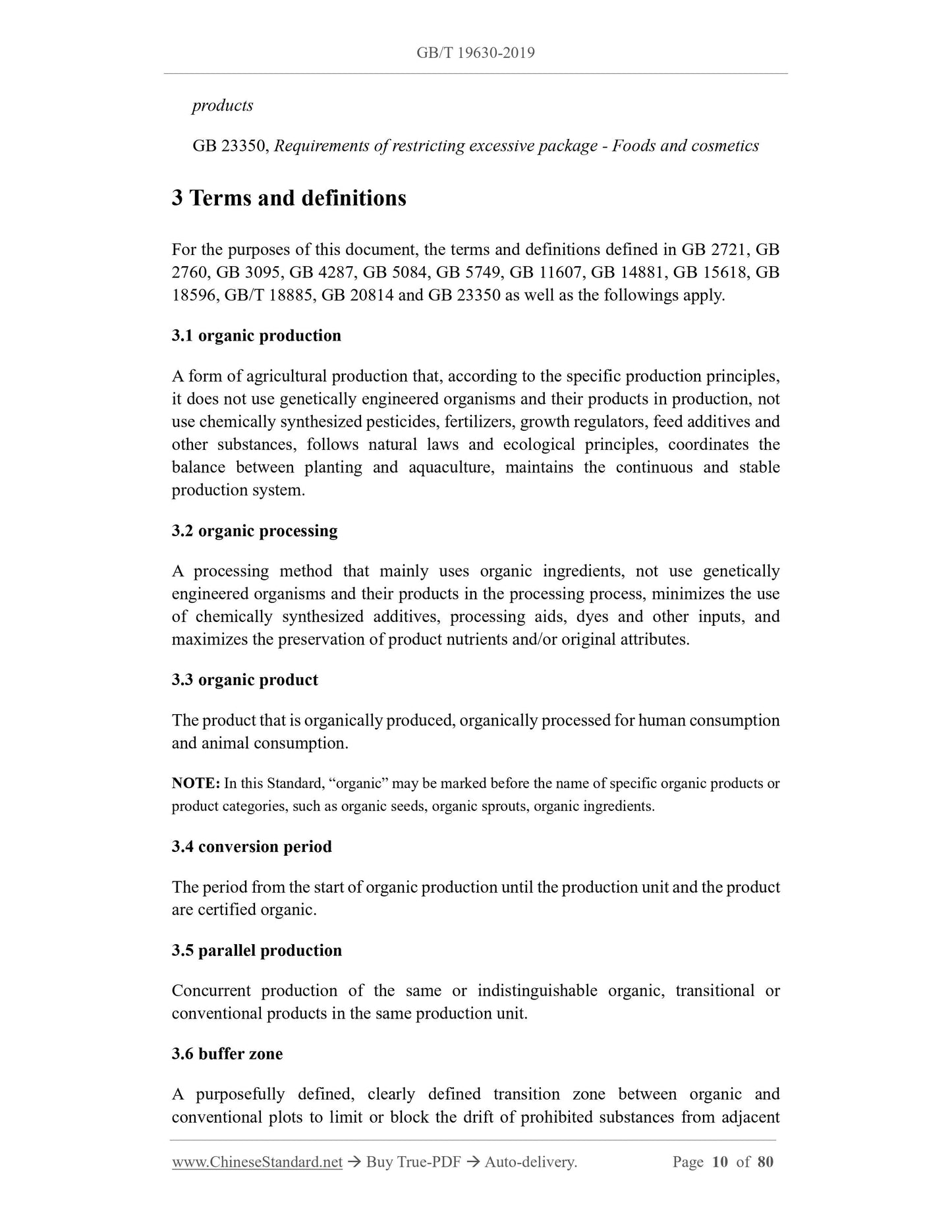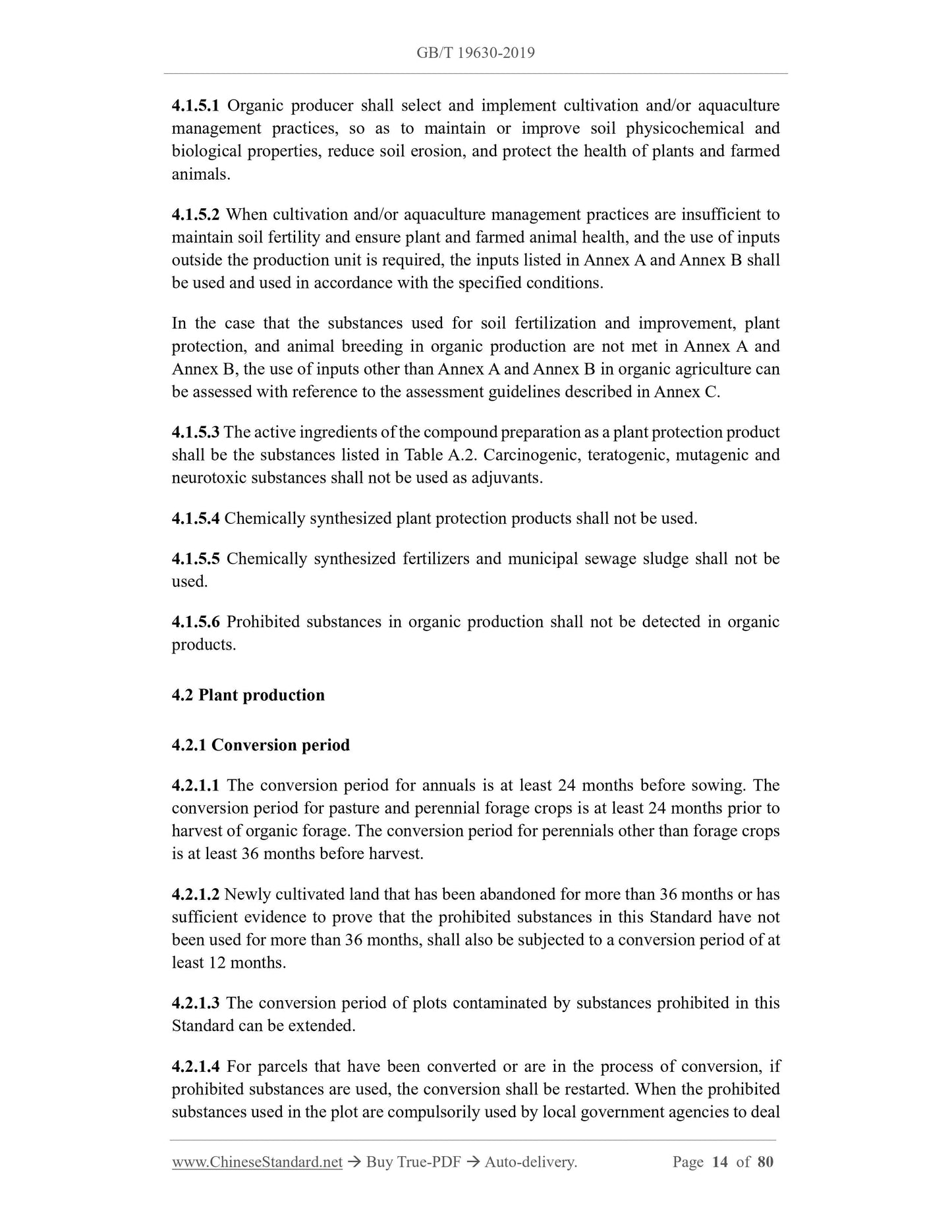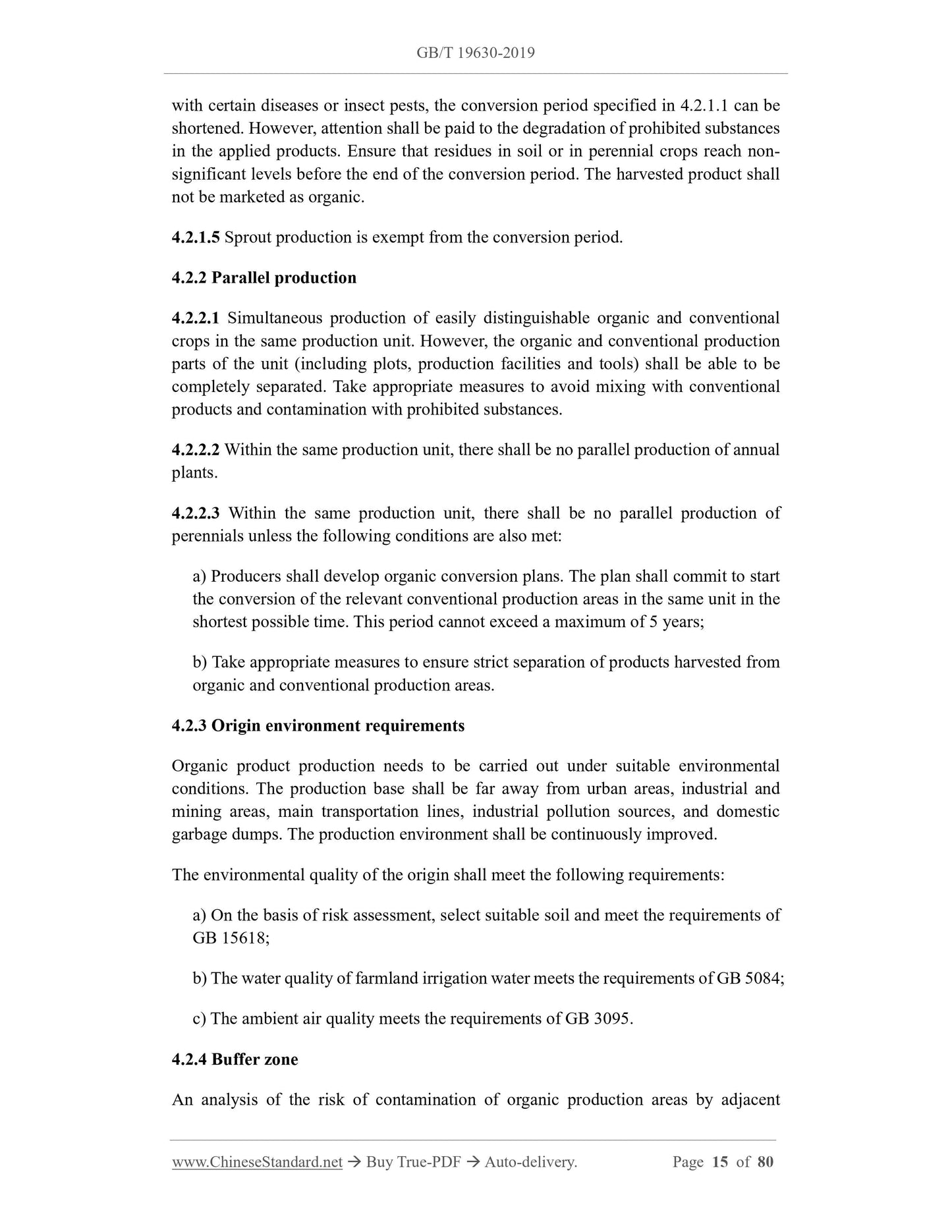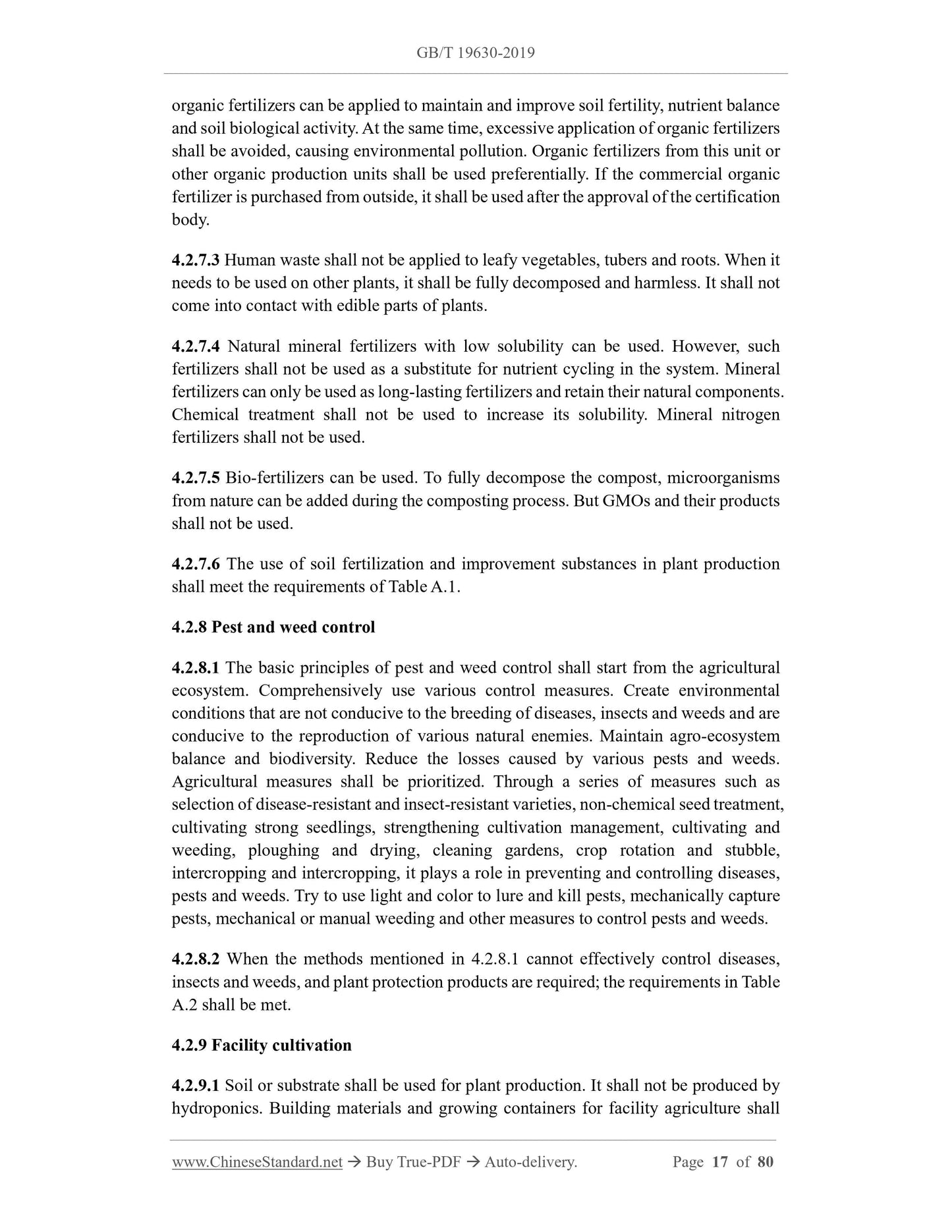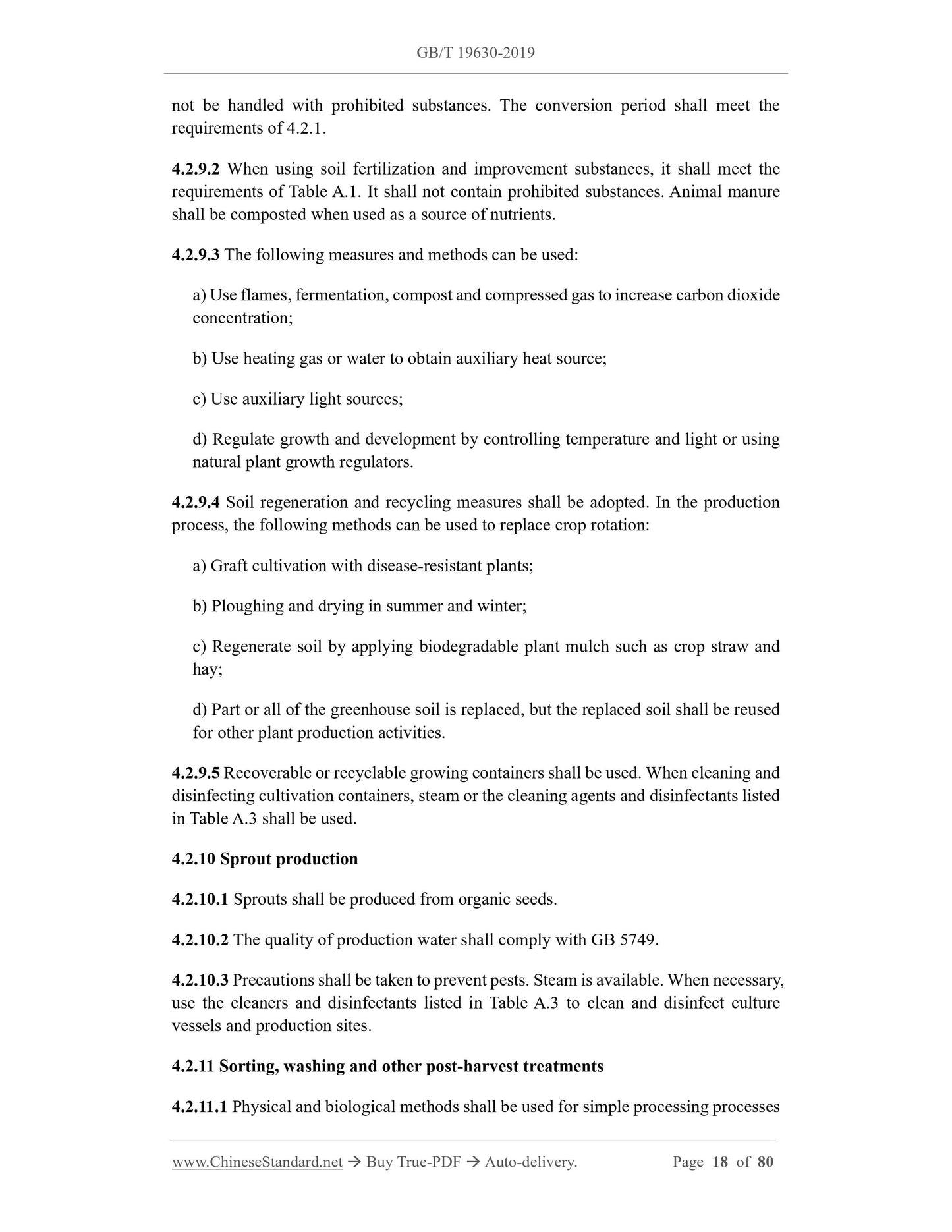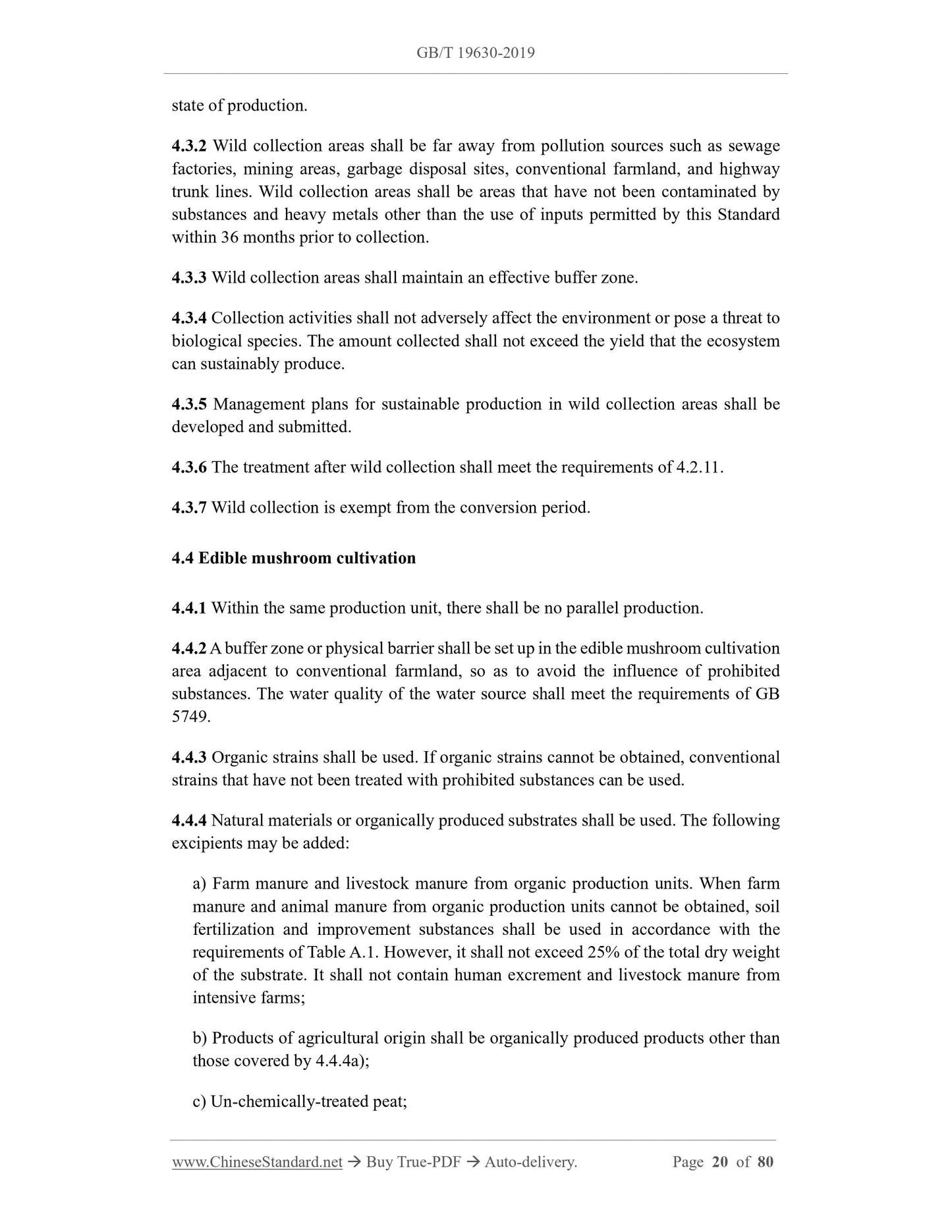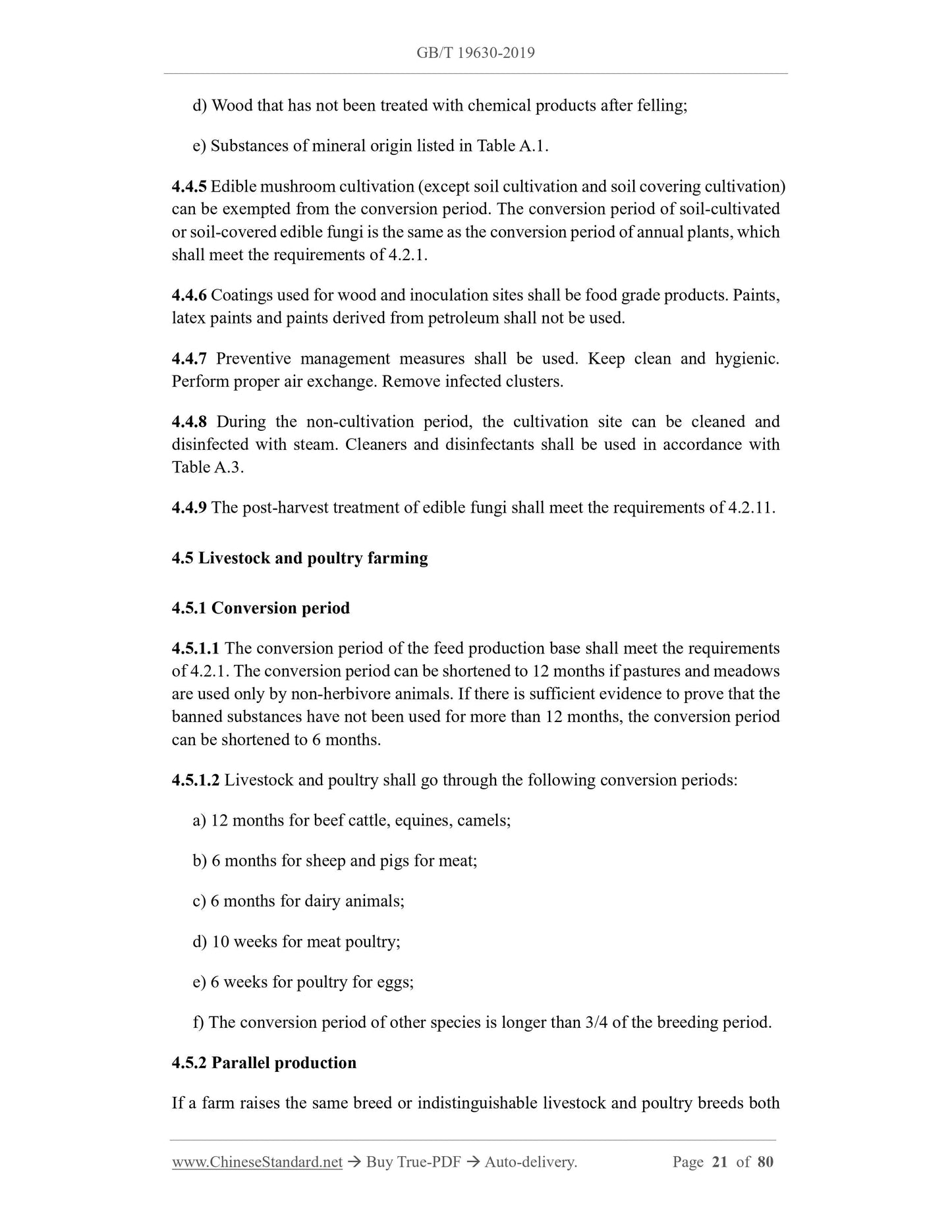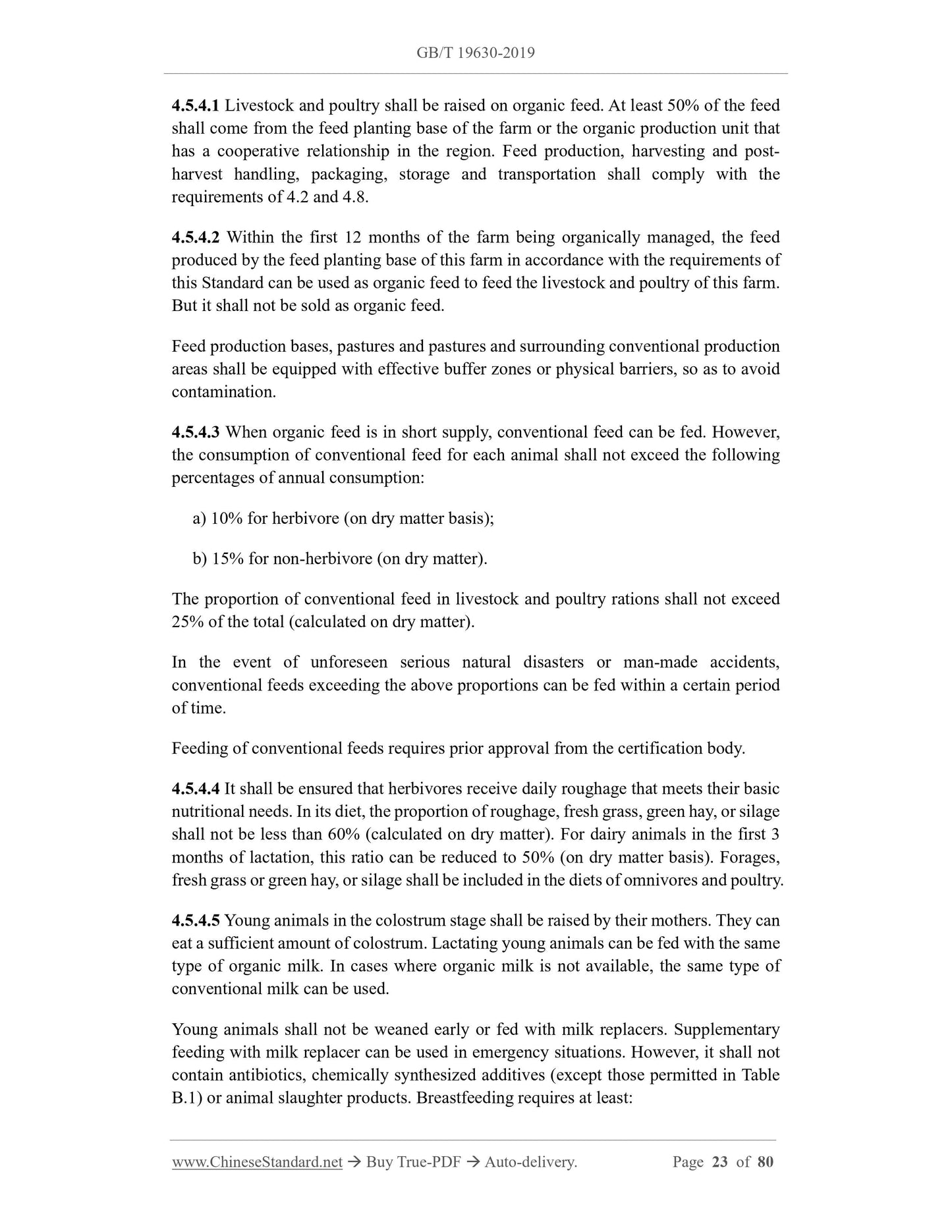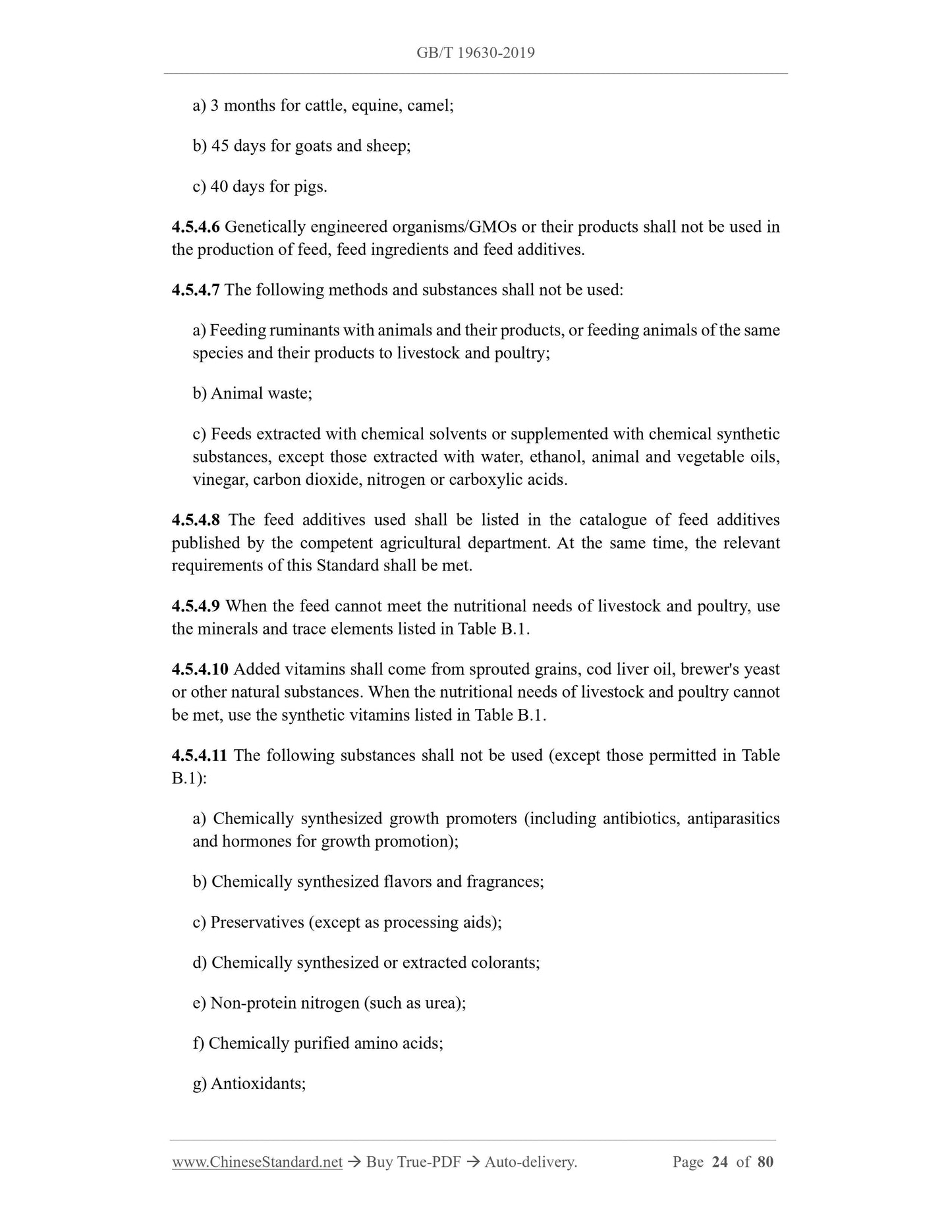1
/
of
12
www.ChineseStandard.us -- Field Test Asia Pte. Ltd.
GB/T 19630-2019 English PDF (GB/T19630-2019)
GB/T 19630-2019 English PDF (GB/T19630-2019)
Regular price
$505.00
Regular price
Sale price
$505.00
Unit price
/
per
Shipping calculated at checkout.
Couldn't load pickup availability
GB/T 19630-2019: Organic products - Requirements for production, processing, labeling and management system
Delivery: 9 seconds. Download (and Email) true-PDF + Invoice.Get Quotation: Click GB/T 19630-2019 (Self-service in 1-minute)
Newer / historical versions: GB/T 19630-2019
Preview True-PDF
Scope
This Standard specifies the requirements for the production, processing, labelling andmanagement system of organic products.
This Standard applies to the production of organic plant, animal and microbial products;
processing of organic food, feed and textiles; packaging, storage, transportation,
labelling and sale of organic products.
Basic Data
| Standard ID | GB/T 19630-2019 (GB/T19630-2019) |
| Description (Translated English) | Organic products - Requirements for production, processing, labeling and management system |
| Sector / Industry | National Standard (Recommended) |
| Classification of Chinese Standard | B04 |
| Classification of International Standard | 65.020.01 |
| Word Count Estimation | 54,518 |
| Date of Issue | 2019-08-30 |
| Date of Implementation | 2020-01-01 |
| Older Standard (superseded by this standard) | GB/T 19630.3-2011; GB/T 19630.4-2011; GB/T 19630.2-2011; GB/T 19630.1-2011 |
| Quoted Standard | GB 2721; GB 2760; GB 3095; GB 4287; GB 5084; GB 5749; GB 11607; GB 14881; GB 15618; GB 18596; GB/T 18885; GB 20814; GB 23350 |
| Issuing agency(ies) | State Administration for Market Regulation, China National Standardization Administration |
| Summary | This standard specifies the requirements for the production, processing, labelling and management system of organic products. This standard applies to the production of organic plant, animal and microbial products, the processing of organic food, feed and textiles, and the packaging, storage, transportation, labeling and sales of organic products. |
Share
